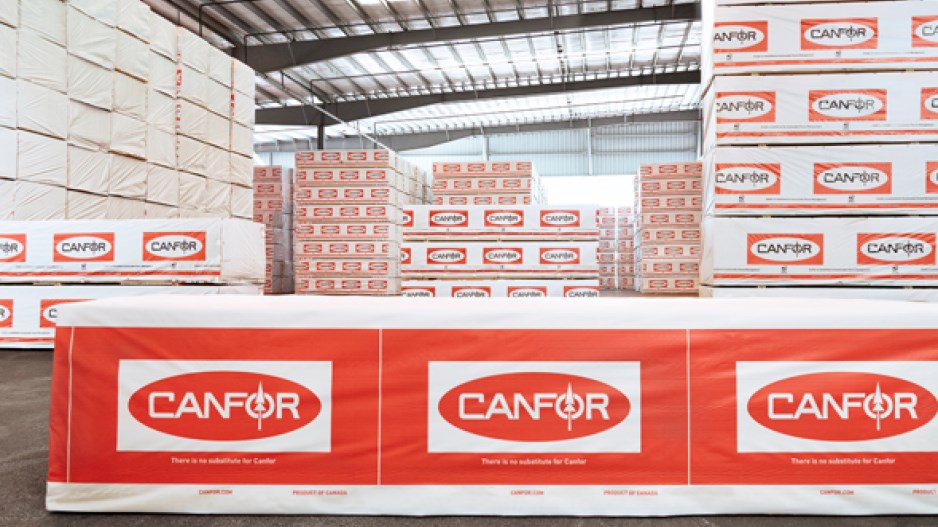A new Chinese sawmill Canfor (TSX:CFP) plans to invest in will make some of the same products that are currently cut in the company's Quesnel mill, set to close in March, and for the same market.
Canfor announced November 26 that it will form a 50/50 joint venture with a Chinese company, Tangshan Caofeidian Wood Industry Co. Ltd., to build a wood manufacturing plant at a deep-water port near Beijing.
The move makes sense for Canfor because of the company's interest in the Chinese wood market, said Russ Taylor, president of Vancouver-based Wood Markets Group. Canfor is currently one of the largest suppliers of wood to China.
"This is an extension of the strategy Canfor has already implemented some time ago where they have a big commitment to China," Taylor told Business in Vancouver.
"They're picking up the pace and raising the bar and saying now we're going to make some investments in China."
The new mill will allow Canfor to produce metric-sized wood products for the Chinese market. Currently, much of the wood that is shipped to China comes in North American sizes, and is then re-cut in China.
"The facility will further process B.C. finished lumber to address the local size needs of the Chinese construction sector," wrote Christine Kennedy, vice-president of brand and external relations for Canfor, in an email.
Few mills in British Columbia have been refitted to be able to cut metric-sized wood, Taylor said, although one of those mills is Canfor's Quesnel sawmill. That mill was shut down in January 2010 during a severe downturn for the industry, but reopened a few months later after Canfor was able to secure customers in China, according to Woodbusiness.ca.
Canfor announced last month it would shut down its Quesnel mill in March 2014, affecting 209 workers. The company said the move was in response to the depleted timber supply in the region, caused by the mountain pine beetle. On the same day, West Fraser (TSX:WFT) announced it would close its mill in Houston, British Columbia.
Canfor's plans in China do not affect B.C. workers, said B.C.'s forestry minister Steve Thomson.
"This plant will re-cut lumber from B.C. into custom cut sizes for the Chinese market, especially for furniture stores, windows and moldings," Thomson said. "So this is a remanufacturing that's taking place as opposed to primary manufacturing."
Also at play is a the planned location of the plant, near a new deep-water port located in China's Hebei Province. Construction on the Caofeidian Port Tangshan started in 2003. As well as accepting other resources like coal and steel, the port is designed to be a lumber and log importing hub. It includes a fumigation facility; with no fumigation, wood can only be accepted during the winter months, Taylor said.
"The B.C. logging sector now has the opportunity to export logs year-round to a new port," Taylor said.
This year, B.C. increased its softwood lumber exports to China by 35%, Thomson said.
"We're on track to break the previous year's exports of softwood lumber," he said.




